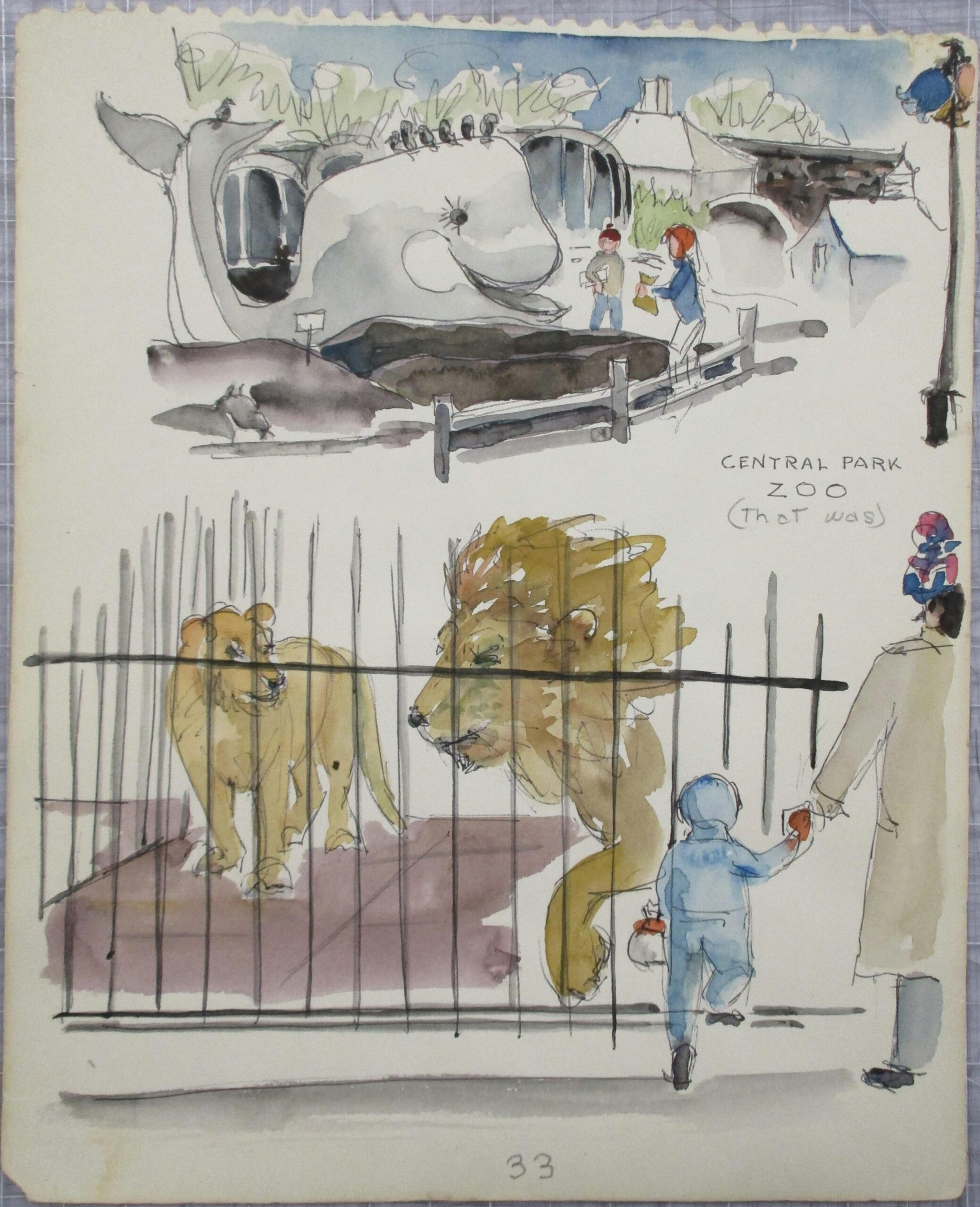The Jane Bannerman Travel Sketchbooks Collection in the New-York Historical Society’s Patricia D. Klingenstein Library consists mainly of freehand pen and ink or watercolor illustrations depicting “Jane’s jaunts,” as the artist called them, around the world. Presently on view in the library’s reading room is Jane Bannerman: New York City Freehand, a selection of Bannerman’s New York City scenes. Bannerman was an eyewitness to a changing city, and her sketches capture intimate views of a New York that is at times preserved and at others fleeting, a theme familiar to visitors of New-York Historical’s current Lost New York exhibition.
As a native New Yorker, Bannerman clearly delighted in capturing sweet and simple vignettes of everyday life in the city. One in particular caught the eye of a colleague and sent me on a research journey; as it turns out, the illustration depicts a former “resident” of Central Park and beloved fixture of two city boroughs – Manhattan and Queens.
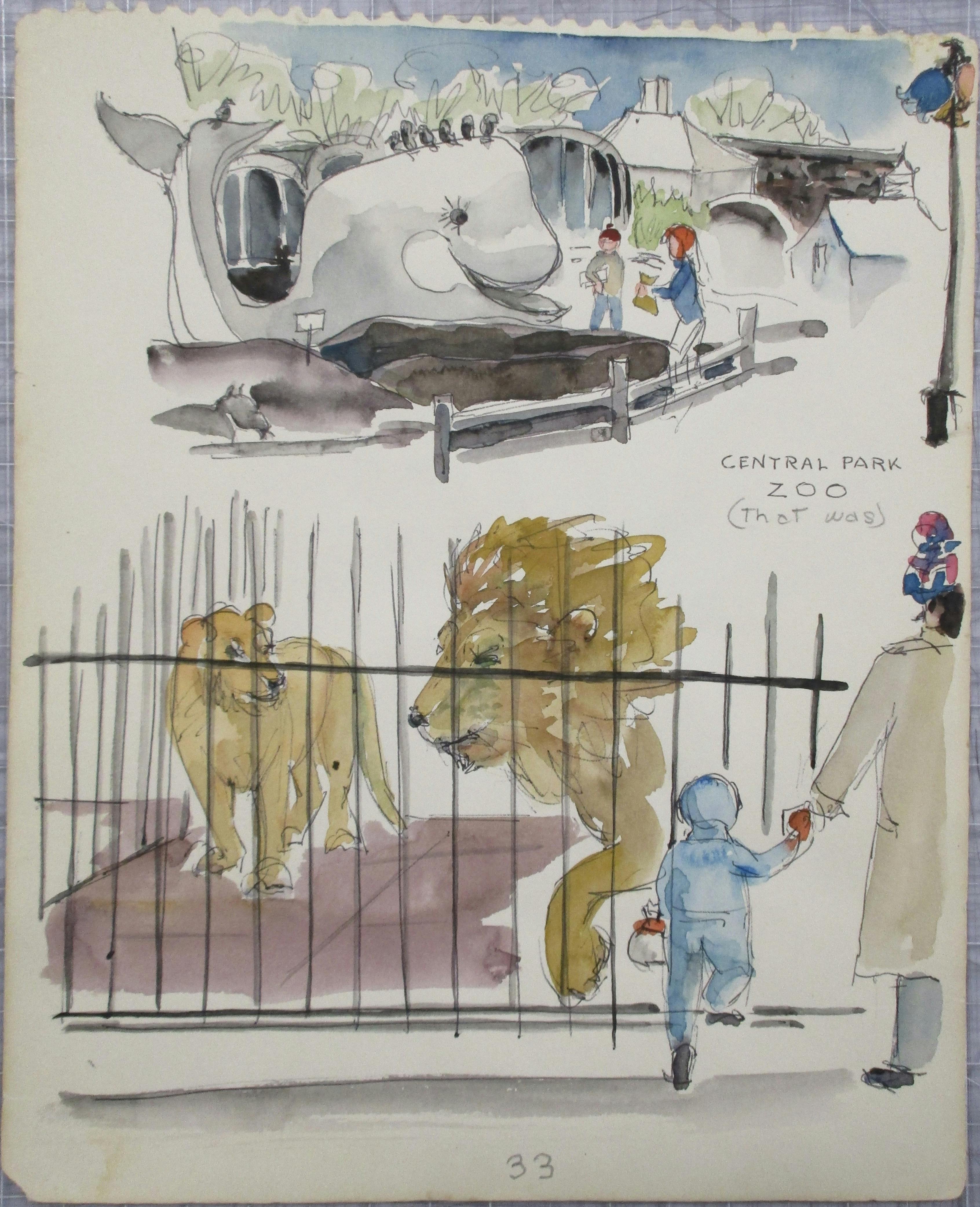
Sketch of “Jonah’s Whale.” Jane Bannerman Travel Sketchbooks Collection, PR 297, Patricia D. Klingenstein Library, New-York Historical Society.
“Jonah’s Whale,” named after the Biblical story, was an installation in the Central Park Children’s Zoo for over 30 years after opening in 1961. It was not a real whale, but an interactive sculpture that children could walk into, and at various points housed a fish tank and other small, marine life-themed exhibits. In 1996, the Zoo decided to go in a more scientific and educational direction, and Jonah’s Whale — later named Whaley, and then Whalemina — was moved to Rockaway Beach, where it lived at Beach 95th Street. Though a local attraction, having been lovingly restored and decorated with mirrors and multi-colored tiles, it sadly washed away during Superstorm Sandy in 2012. In the years since there have been efforts to both construct a new whale and write a children’s book about it.
Flipping through Bannerman’s sketchbooks feels like a walking tour of a bygone New York City. The examples below evoke scenes from Lower Manhattan and the East River shore. To see more of her sketches in the Patricia D. Klingenstein Library, visit Jane Bannerman: New York City Freehand, on view until July 28, 2024.

Sketch of “Big Allis,” or “Alice.” Jane Bannerman Travel Sketchbooks Collection, PR 297, Patricia D. Klingenstein Library, New-York Historical Society.
Properly known as the Ravenswood Generating Station, in Queens, along the East River, “Big Allis” is the City’s largest power plant, and plans are afoot to convert it into a renewable energy center.
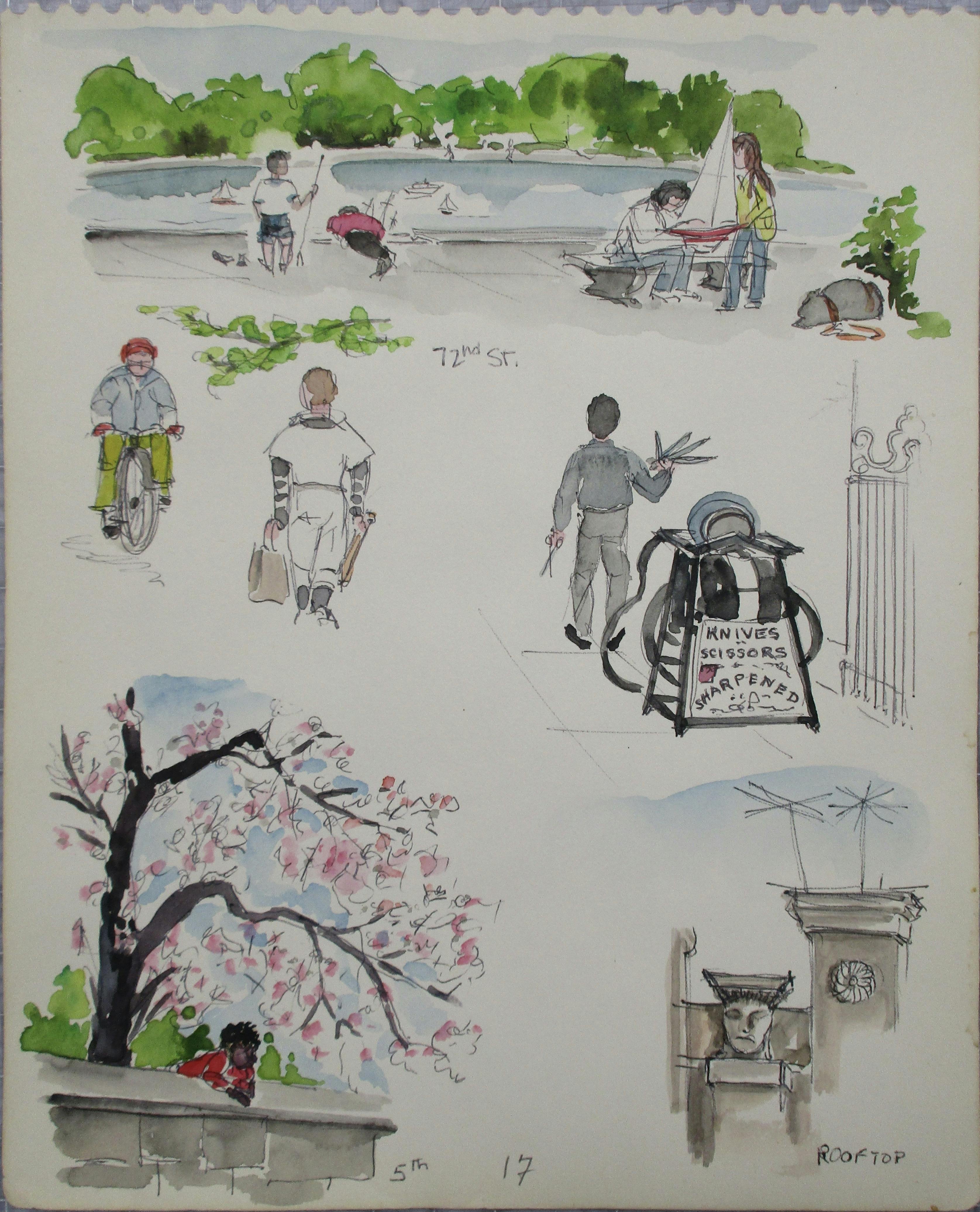
Sketch of 72nd Street. Jane Bannerman Travel Sketchbooks Collection, PR 297, Patricia D. Klingenstein Library, New-York Historical Society.
Here Bannerman depicts the sidewalk knife sharpener, who came equipped with a home-made contraption: a grinding wheel turned by a fan belt, to sharpen knives. He carried a school bell to announce his presence.
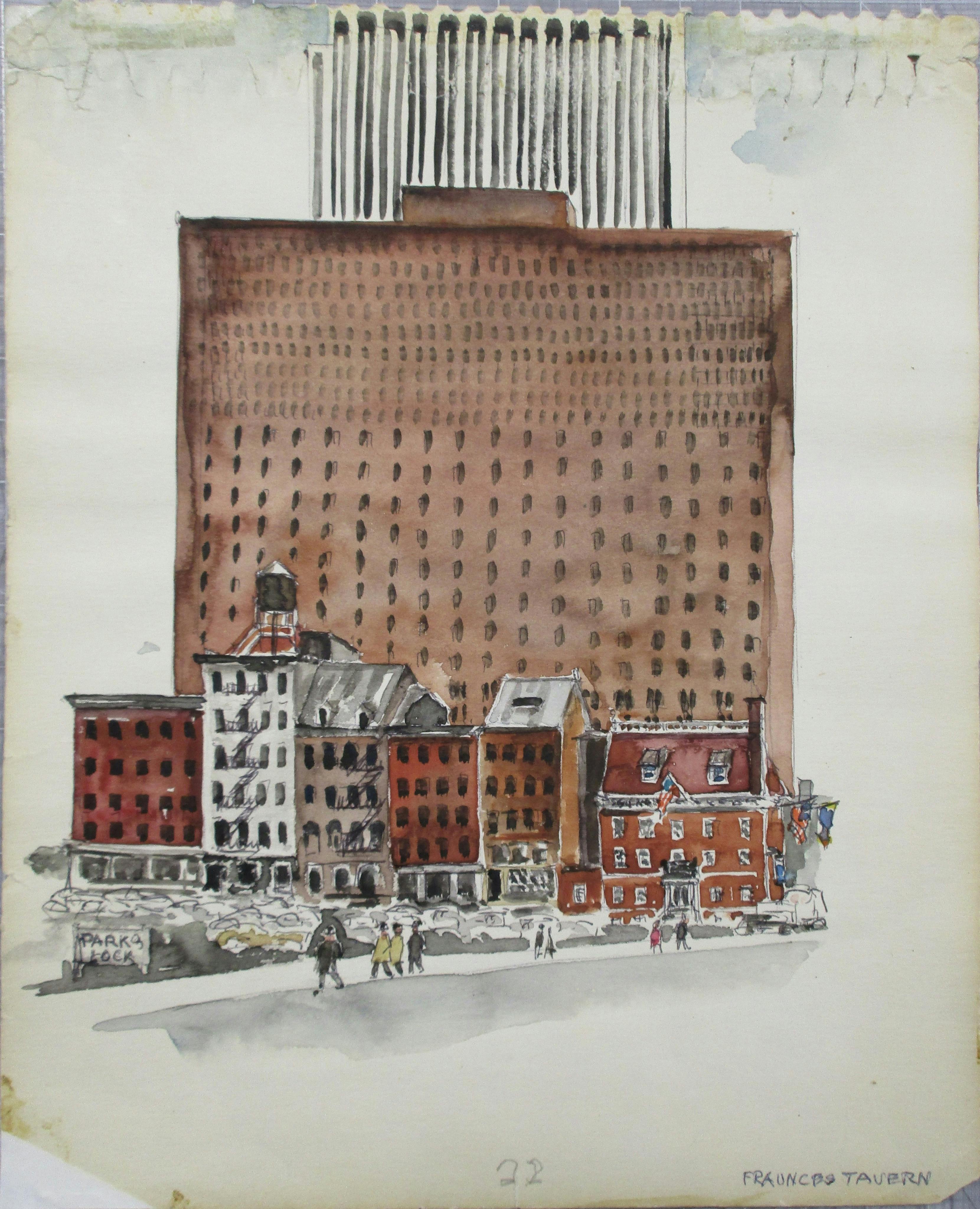
Sketch of Fraunces Tavern. Jane Bannerman Travel Sketchbooks Collection, PR 297, Patricia D. Klingenstein Library, New-York Historical Society.
In 1785, this meeting hall and inn built at the corner of Queen Street (now Pearl Street) and Canal Street (now Broad Street) became one of the first buildings to be occupied by offices of the federal government, when New York City was the nation’s capital. The entire block housing the Museum (which opened in 1907) is on the National Register of Historic Places.
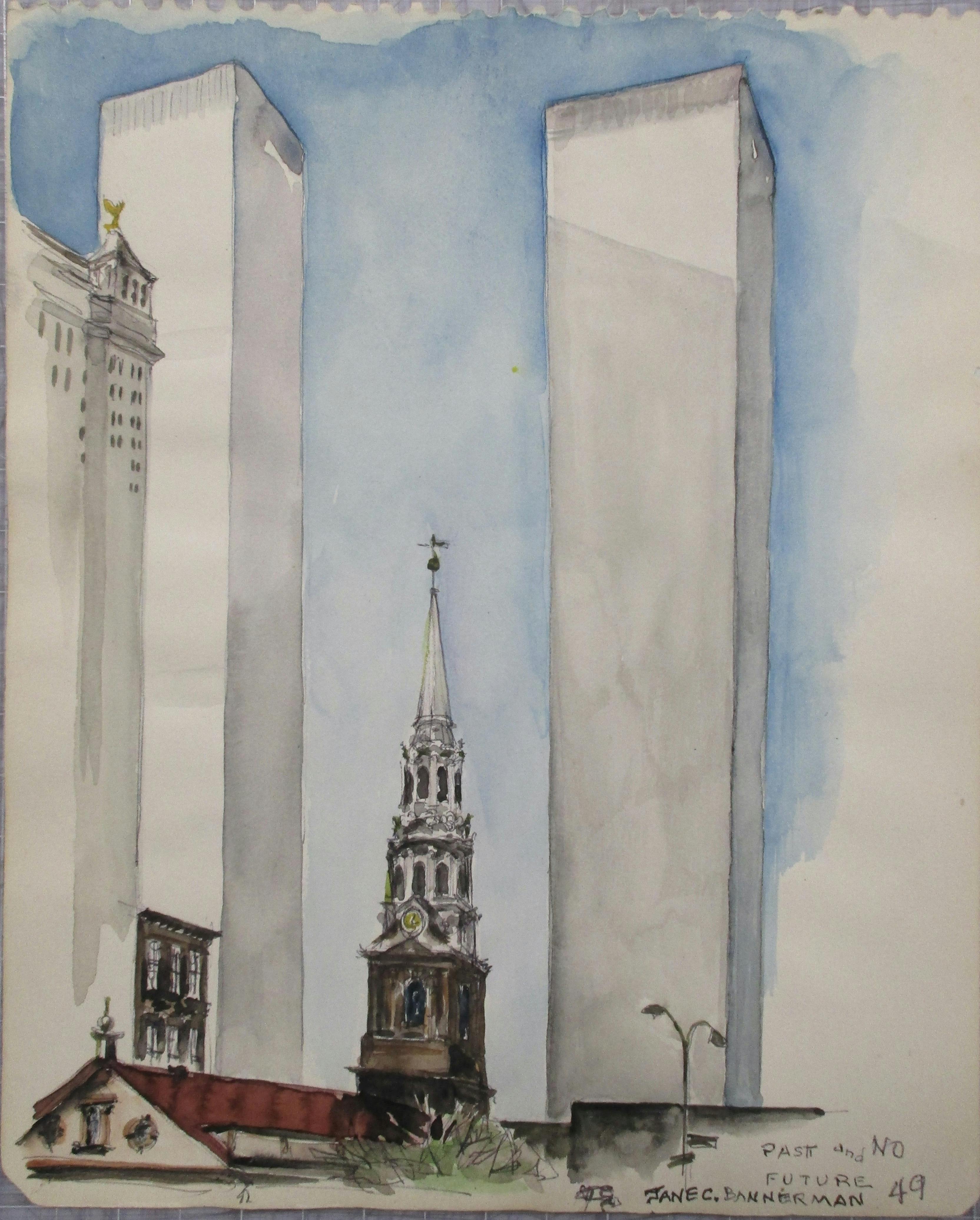
Sketch of World Trade Center and St. Paul’s Chapel. Jane Bannerman Travel Sketchbooks Collection, PR 297, Patricia D. Klingenstein Library, New-York Historical Society.
Lastly, Bannerman illustrated a haunting view of two neighboring buildings, St. Paul’s Chapel and the Twin Towers. “The Little Chapel That Stood” was a place of peace and rest for first responders (firefighters, police officers, doctors, and nurses) in the midst of unimaginable pain. Originally termed a “chapel of ease,” it was completed in 1766 at Broadway and Fulton Street. George Washington celebrated Thanksgiving there in 1789. Sketching most likely in the late 1970s, Bannerman titled the image “Past and Future,” juxtaposing the historical and modern eras that produced these two vastly different structures.
Jill Reichenbach is Reference Librarian at the Patricia D. Klingenstein Library.
